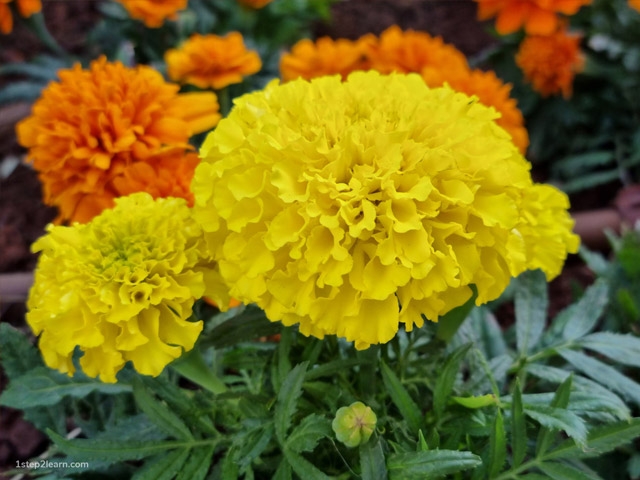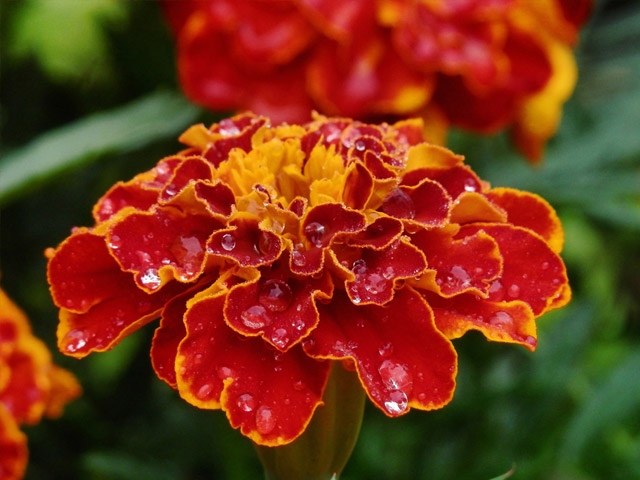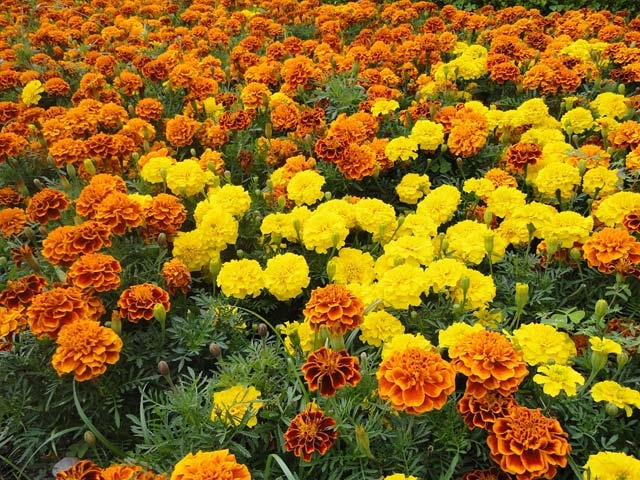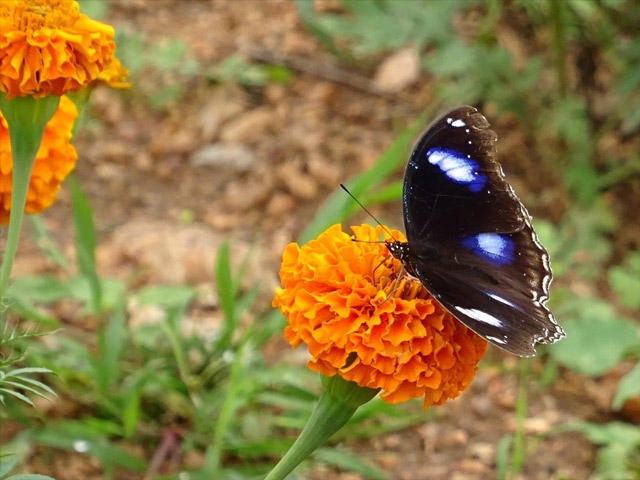Tagetes Marigolds: Nature's Pest Controllers and Vibrant Garden Beauties
Benefits
-
Natural pest repellent, deterring aphids, nematodes, and whiteflies.
-
Companion planting with marigolds can protect nearby crops from harmful insects.
-
Low-maintenance plants that thrive in full sun and various soil conditions.
-
Extended blooming period from late spring to fall, providing continuous color.
-
Suitable for containers, borders, and flower beds, adding vibrant hues to the landscape.
-
Attract beneficial insects like bees, butterflies, and hoverflies, aiding in pollination.
From Tagetes to Marigolds: Understanding the Naming of a Flower
Did you know that the beautiful flowers we often call "marigolds" actually have a scientific name? They belong to a specific genus called Tagetes.
So, when we talk about them, we can refer to them as "Tagetes marigolds." But here's the thing, it's perfectly fine to just call them "marigolds" too.
It's the common name that most people use, and everyone knows what we mean when we say "marigolds." So, whether you want to be specific and say "Tagetes marigolds" or keep it simple with just "marigolds," both names are correct.
Bloom Time
Did you know that most varieties of marigolds bloom for a really long time? It's amazing! Once they start blooming in early summer, they keep going strong until late fall when the frost sets in.
That's a pretty impressive flowering period, right? It means you'll have those beautiful, vibrant blooms brightening up your garden for months on end.
What Are the Two Types of Marigold?
Let's talk about the two types of marigold. Marigolds are these lovely flowers that come in different varieties, but the two most common types are "Tagetes erecta (African marigold)" and "Tagetes patula (French marigold)".
African marigolds are known for their big, showy blooms and tall height. They can reach up to three feet in height and have large, round flowers in vibrant shades of yellow, orange, and even red. hey make quite a statement in any garden or floral arrangement!
On the other hand, we have French marigolds, which are a bit smaller in size. They typically grow up to one or two feet tall and have daintier flowers with a mix of colors, like red, orange, and yellow.
French marigolds are known for their compact growth and are often used as borders or in containers to add a pop of color.
Both types of marigolds are easy to grow, bloom abundantly, and attract pollinators like bees and butterflies.
Captivating Colors: Tagetes Marigolds as Garden Border
Let me tell you about the striking colors of these incredible flowers and why they make a great choice for a garden border. Picture this: a garden transformed into a vibrant canvas with colors that pop and catch the eye. That's exactly what Tagetes marigolds bring to the table.
These flowers come in a wide array of hues, from sunny yellows and fiery oranges to bold reds and creamy creams. Their colors are so captivating and vivid that they can instantly uplift the overall aesthetic of any garden.
Now, imagine creating a beautiful border with these marigolds. Placing them along the edges of your garden beds or pathways can create a stunning visual impact.
The vivid colors draw attention, adding a delightful burst of energy and life to the garden. The border becomes a colorful frame, highlighting the beauty of the plants within.
Not only do marigolds serve an ornamental purpose, but they also act as a natural barrier. Their aromatic scent helps deter pests and can provide some protection to the plants they surround.
Marigolds: Nature's Pest Controllers in Sweet Pepper Cultivation
Did you know that marigold plants can actually help control pests in sweet pepper cultivation?
It's pretty amazing! When you have marigolds as companion plants alongside sweet peppers, they attract a whole range of parasitoids, which are natural enemies of pests.
In the garden of life, flowers are the sweetest companions.
These parasitoids help suppress pest populations by feeding on them or their eggs. Isn't that cool?
By having marigolds in the mix, we can reduce the need for synthetic insecticides and rely more on these natural pest controllers. It's a more sustainable and eco-friendly approach to farming.
From Ancient Civilizations to Modern Gardens
Marigolds have been cultivated for centuries and have a rich cultural heritage. They are believed to have originated in the Americas, particularly in Mexico and Central America.
The ancient civilizations of the Aztecs and the Mayans highly revered marigolds and considered them sacred flowers. Marigolds were used in various religious and cultural ceremonies, and their vibrant colors were associated with the sun and fire.
When European explorers discovered the Americas, they were fascinated by marigolds and brought them back to Europe in the 16th century.
Since then, marigolds have spread to different parts of the world and have become popular garden flowers. They are loved for their cheerful blooms, easy cultivation, and ability to repel certain pests.
In many cultures, marigolds are also associated with festivities and celebrations. For example, in Mexico, marigolds play a significant role in the Day of the Dead celebrations, where they are used to decorate altars and graves.
Care
When it comes to taking care of marigolds, it's actually pretty easy! One important thing is to keep the soil moist, especially during dry periods. You want to make sure the plants get a good watering once a week. If you have marigolds in containers, they might need to be watered every day or every other day, especially in the summer when it's hot.
Another key aspect is providing them with plenty of food. This will ensure that they have enough nutrients to keep flowering for a long time. You can use an organic compost to give them that extra boost. With proper watering and feeding, your marigolds will thrive and reward you with beautiful blooms all season long.
When you're getting ready to plant marigolds, I have a little tip for you. I recommend starting with small starter plants. While it may take a bit longer for them to grow, these small starters tend to be more durable and have a higher chance of success.
Marigolds are usually considered annual plants, which means they complete their life cycle in one year. But here's the cool part: when the plant dries up and produces seeds, you can collect those seeds and plant them in the ground for the next year. It's like having a continuous cycle of new plants year after year.
Conclusion
Tagetes Marigolds are a delightful addition to any garden. With their vibrant colors, natural pest-repellent properties, and ability to attract pollinators, they offer both aesthetic appeal and practical benefits.
Whether you call them "Tagetes marigolds" or simply "marigolds," these flowers have a rich history and a place in gardens around the world. Easy to care for and versatile, they bring joy and beauty from late spring to fall. Embrace the charm of Tagetes Marigolds and create a vibrant and thriving garden for all to enjoy.





